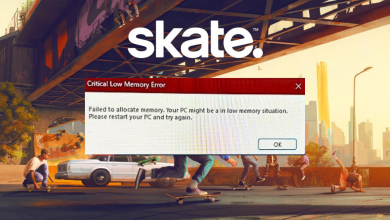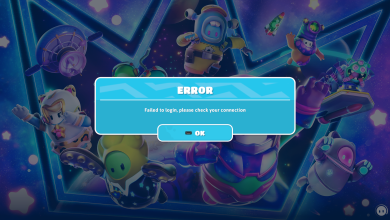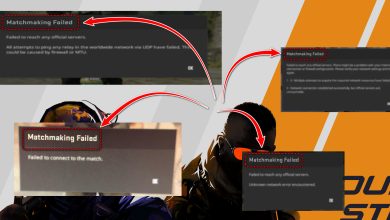Hogwarts Legacy Keeps Crashing on PC? – Try these Fixes
Hogwarts legacy can crash due to various reasons depending on your Windows environment. This usually includes insufficient permissions for the game process, the interference of other services and processes with the game client, and more.

Sometimes, the power plan your computer uses can also trigger the issue. This can happen when your power plan is limiting the available resources which are required to run the game smoothly. We will be taking you through several methods below that you can implement to resolve the issue for yourself.
Before you proceed with troubleshooting method mentioned below, please make sure that your computer meets the system requirements of Hogwarts Legacy as main cause of this issue is having incompatible system specifications. We have listed Hogwarts Legacy’s system requirements.
1. Run as Administrator
The first thing you should do when starting to resolve the issue in question is to run the game with elevated privileges. In some instances, the game crashes instantly on startup due to insufficient permissions, resulting in the interference of various third-party applications or services.
If this case is applicable, you can circumvent the issue by running the game and Steam as administrator. If you own Hogwarts Legacy on Epic Games, simply run the Epic Games client with administrative privileges. To do this, follow the instructions below:
- First, exit the Steam client on your computer.
- After that, open the Start Menu and search for Steam.
- Then, click on the Run as administrator option to open Steam as admin.

Opening Steam as Admin - Navigate to your Steam Library and right-click on Hogwarts Legacy. From the drop-down menu, go to Manage > Browse local files.

Navigating to Local Game Files - This will open up a File Explorer window. Right-click on the game executable file and go to Properties.

Opening Game Properties - On the Properties window, switch to the Compatibility tab.
- Tick the Run as administrator checkbox, click Apply and then hit OK.
- Once you do that, open the game and see if that fixes the issue.
2. Disable Fullscreen Optimization
Fullscreen optimization is a Windows feature that allows you to run the games on your computer in windowed mode with the performance and benefits of Fullscreen exclusive. This can be found in the properties window of each game executable, in addition to the in-game display mode option.
In some instances, Fullscreen optimization can cause the game to crash in which case you will have to disable the option. To do this, follow the instructions down below:
- First, open the Steam client on your computer and navigate to Library.
- Right-click on Hogwarts Legacy and go to Manage > Browse local files.

Navigating to Local Game Files - There, right-click on the game executable file and choose Properties.

Opening Game Properties - Go to the Compatibility tab on the Properties window.
- There, tick the Disable Fullscreen optimization checkbox.

Disabling Fullscreen Optimization - Click Apply and hit OK.
- Once you do that, open the game to see if the issue persists.
3. End File Explorer Process
Hogwarts Legacy has been encountering some issues with the file explorer process in Windows. If you have a file explorer window open, an explorer.exe process runs in the background to facilitate any file navigation or actions performed.
You can start by closing any open file explorer tabs and then opening the game. This may not always fix the issue as the process can remain dormant in the background. In such a scenario, you will have to use the Task Manager window to kill the process.
Follow the instructions below to do this:
- Start by right-clicking the Start Menu icon and choosing Task Manager from the menu that appears.

Opening Task Manager - On the Task Manager window, look for Windows Explorer or explorer.exe processes.
- Select the process and click on the End task option.

Ending File Explorer Window - Once you do that, open the Steam client and launch Hogwarts Legacy. If the game is still crashing.
4. Lower Graphics Settings
The graphics settings of your game can be another cause of the game crashing in certain instances. This can happen when the system resources are overloaded and cannot handle the graphics settings that you have set in specific scenes.
If this case is applicable, you will have to lower your in-game graphics settings overall to resolve the issue. Even if you have a capable PC that can handle the game at ultra settings, we recommend dropping it down to high to see if that fixes the issue for you.
Head to the game’s graphics settings and lower the various texture settings to see if that isolates the constant crashes. In case the problem persists, move to the next method below.
5. Verify Game Files
If you are missing some game files on your computer, the game will certainly not be able to run properly. In such a scenario, you need to scan the game installed on your computer to see for any missing or damaged files.
This can be done via the Verify the integrity of game files feature on Steam. In case of any discrepancies, Steam will automatically replace the files with newer ones downloaded from the servers. Follow the instructions for your respective platform to do this.
Steam
- First, open the Steam client on your computer.
- Navigate to Library and right-click on Hogwarts Legacy. Choose Properties from the drop-down menu.

Navigating to Game Properties - On the Properties window, switch to the Local Files tab.
- There, click the Verify integrity of game files option to scan and repair the game installation.

Verifying Game Files on Steam - Wait for it to complete and see if that resolves the issue.
Epic Games
If you have the game on the Epic Games launcher, follow the instructions below instead:
- Open the Epic Games Launcher on your computer.
- Navigate to the game in your Library and click on the three-dots option.
- From the drop-down menu, choose Manage.

Navigating to Game Settings - Finally, click on the Verify option to repair the game files.

Verifying Game Files on Epic Games Launcher - Once it is complete, see if the issue persists.
6. Update Graphics Drivers
If the graphics drivers are obsolete or damaged due to a new installation or Windows update, the game is likely to encounter crashes constantly.
This is because games are heavily dependent on the graphics card of your computer. Thus, the graphics drivers are used to communicate with the installed GPU on your motherboard.
To update your graphics drivers, you will have to perform a clean install using the Display Driver Uninstaller utility. This will not leave any remnants of the current drivers installed on your computer. Follow the instructions below to do this:
- First, download the Display Driver Uninstaller (DDU) utility from the official website here.
- After downloading the tool, extract the files to any desired location.
- Then, navigate to the extracted location and open the Display Driver Uninstaller.exe file.
- You will be shown the General Options window on startup. Click the Continue button to proceed.

DDU General Options - After that, choose GPU from the Select device drop-down menu.

Selecting Device - Follow it up by choosing your graphics card manufacturer from the Select device type drop-down menu.

Selecting Graphics Card Manufacturer - Finally, click the Clean and restart option to uninstall the drivers.

Uninstalling Graphics Drivers - After your PC boots up, navigate to your graphics card manufacturer’s website and download the latest drivers available for your card.
- Install the latest drivers and see if the issue goes away.
7. Change Windows Power Plan
Finally, if none of the methods has resolved the issue for you, it is likely the issue is due to your Windows Power Plan. The power plan you use decides how the power on your computer is being used via a collection of hardware and system settings.
This can help you achieve common ground between performance and saving energy, while you can choose to prioritize one over the other at any time. For gaming, you should always be using High Performance at the minimum.
There is also a hidden power plan known as Ultimate Performance that you can enable and use on your system. For the sake of this issue, high performance will do the job just fine. Follow the instructions below to change your power plan:
- First, open the Start Menu and search for Power Plan.
- Select the Choose a power plan option.

Opening Power Options Window - On the Power Options page, select the High Performance option.

Changing Power Plan to High Performance - With that done, open Hogwarts Legacy to see if the game is still crashing.




